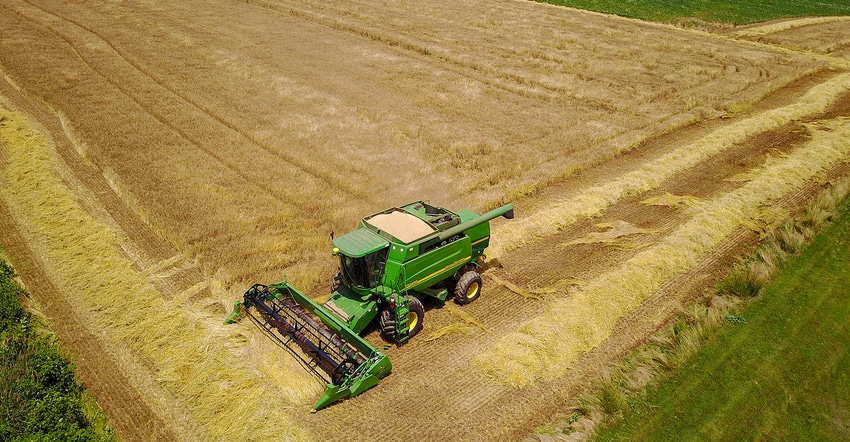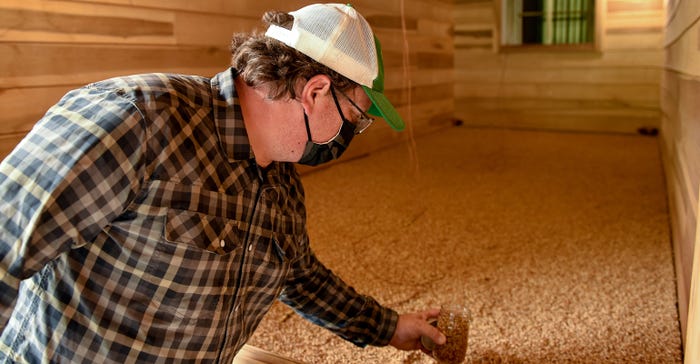
Troegs Independent Brewing of Pennsylvania used 8.5 million pounds of grain in 2021. So its recent announcement that it would commit to buying as much as 250,000 pounds of locally grown barley may seem like a drop in the bucket.
But it’s a start to get more malting barley acres planted.
John Trogner, co-founder of Troegs, says the company buys its malted barley from maltsters rather than malt its own barley. Trogner says that most of the 8.5 million pounds of malting barley they get comes from the Midwest and Canada, as those areas have a lot more land and infrastructure to produce barley in bigger quantities.
But having the ability to market a locally sourced beer — they source 200,000 pounds of locally produced barley for two of their beers — allows them to stand out from the competition and as a supporter of local farms.
The company already sends much of its spent grains from the beer-making process to local dairy farms.
“We still think it's an important part of what we're doing,” Trogner says. “We understand it, and there is a group of insiders that absolutely understand that the beer they're drinking has barley from somewhere within an hour of Troegs.”
If you’re thinking of putting some barley in the ground for malting, here’s what you should know:
Have a market. "And that's one of the most important things … to try to convey to anyone who's looking to grow malting barley for the first time … make sure you have a home for it," says Mark Brault, founder and owner of Deer Creek Malthouse in Glen Mills, Pa. “Don't grow it on spot because you want to make sure you have a buyer, and you want to make sure you're very clear on what the requirements are for that buyer, and they're different for malting.”
Brewers and distillers use two types of barley to make alcohol, according to Penn State Extension — two-row and six-row. Two-row barely kernels are more symmetrical in comparison to six-row barley, which has a symmetrical center but has two lateral rows of kernels that are thinner and shorter. In Pennsylvania, it is better to grow six-row barley because of environmental conditions, according to Extension.
Don’t let it sprout. Malting barley is dried, soaked in water to force germination, and then dried again to stop the germination process. This germination, according to Extension, creates enzymes that turn starch to fermentable sugar and raises the soluble starch content that’s crucial for the beer-making process.
Managing the crop to prevent preharvest sprouting is crucial, especially in a year when the barley gets off to a late start and rainy, humid conditions come close to harvest.

MALTING PROCESS: Malting barley is dried, soaked in water to force germination, and then dried again to stop the germination process. This germination creates enzymes that turn starch to fermentable sugar and raises the soluble starch content that’s crucial for the beer-making process.
“We don’t want the grain to sprout in the field; we want to wait until it’s at the malthouse,” Brault says.
Scott Broussard, head maltster at Double Eagle Malt in Huntington Valley, Pa., says the varieties his growers are putting in the ground have dormancy built in so preharvest sprouting isn’t a concern. The challenge is that the grain can’t be used for a few months until after harvest, which can create a challenge for storage.
Grow it in “sweet soil.” According to Extension, barley requires more alkaline soils — pH of between 6.0 and 8.5 — and this can be challenging as most of the state’s soils are more acidic.
Liming can help raise the soil pH, along with providing some calcium and magnesium.
Pay close attention to quality. Good-quality barley for malting looks bright, is not moldy, and has nice, plump kernels, Brault says.
Aaron MacLeod, director of the Center for Craft Food and Beverage at Hartwick College in Oneonta, N.Y., has put together a list of quality characteristics maltsters look for:
germination of 95% or higher
protein content ranging from 9.5% to 12.5% on a dry basis
moisture below 13.5%
low deoxynivalenol, or DON — also known as vomitoxin
Maltsters will reject anything with a DON level higher than 1.0 parts per million.
Adriana Murillo-Williams, agronomy Extension educator with Penn State Extension, says growers should also be careful about managing nitrogen. “Excess N may lead to high protein levels — above 12.5% — in the grain not suitable for malting,” she says.
Brault says that it’s too early to predict how this season’s malting barley crop will look like once it’s harvested in mid- to late June. Barley for malting can fetch a nice premium, he says, anywhere from $1 to $10 per bushel depending on quality.
The fact that there is an already solid barley feed market in the region, he says, also ensures that a grower will at least have a home for the barley, even if it does get rejected for malting.
“There is definitely room to grow. I think some of it depends on malting infrastructure, some economy of scale, and reduction in cost and price," Brault says. “Some of it depends on the overall continuity of the value chain, which is fragile and requires everyone to participate in. It's heavily contingent on the environment and the grain.”
About the Author(s)
You May Also Like






